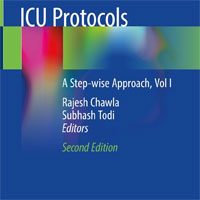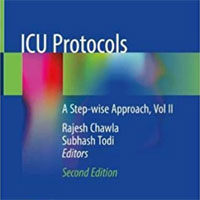Tag: hypoxemia
Awake prone positioning does not reduce the risk of intubation in COVID-19 treated with high-flow nasal oxygen therapy
To the best of our knowledge, this is the first multicenter study that prospectively evaluated the benefits and the role of HFNO combined with awake prone positioning in the prevention of intubation in an adjusted large cohort... read more
Factors Associated to ICU Mortality in Critically Ill Patients Infected with COVID-19 in Spain
Older COVID-19 patients with higher APACHE II scores on admission, those who developed AKI grades II or III and/or septic shock during ICU stay had an increased risk-of-death. ICU mortality was 31%. A total of 663 patients... read more
Dual Therapy Using Sildenafil and Milrinone Superior to Monotherapy in Neonates with Severe PPHN
Dual therapy using sildenafil and milrinone was superior to monotherapy with either drug in neonates with severe persistent pulmonary hypertension (PPHN) and is recommended for use in resource-constrained settings. A double-blind... read more
ECMO During the Coronavirus Disease 2019 Pandemic
In the midst of the 2009 influenza A H1N1 pandemic, clinicians turned to extracorporeal membrane oxygenation (ECMO) as a strategy to save lives. Based on the H1N1 experience, and the ECMO to Rescue Lung Injury in Severe... read more
Awake Prone Positioning for COVID-19 Hypoxemic Respiratory Failure
Infection with SARS-CoV-2 can result in Coronavirus Disease–19 (COVID-19). While the majority of patients are asymptomatic or have mild disease, approximately 14% develop more severe disease including hypoxemic respiratory... read more
When Should I Worry About a PE in a Patient with COVID-19
PE diagnosis in COVID-19 patients is challenging. Many of the features of PE, such as shortness of breath and hypoxemia, are very common in patients with COVID-19, even in the absence of PE. Further, the diagnostic tests... read more
COVID-19: A Hypothesis Regarding the Ventilation-Perfusion Mismatch
We believe that a severe V/Q mismatch underlies the pathophysiology of moderate to severe COVID-19 cases, in which downregulation of ACE2 secondary to viral endocytosis plays a key role. There is low V/Q ratio in areas of... read more
Effect of Convalescent Plasma Therapy on Time to Clinical Improvement in Patients With Severe COVID-19
Among patients with severe or life-threatening COVID-19, convalescent plasma therapy added to standard treatment, compared with standard treatment alone, did not result in a statistically significant improvement in time to... read more
The Perils of Premature Phenotyping in COVID-19
The Severe Acute Respiratory Syndrome Coronavirus-2 (SARS-CoV-2) poses an unprecedented global healthcare challenge. Severe novel Coronavirus disease (COVID-19) pneumonia frequently causes hypoxemic respiratory failure, manifesting... read more
Prone Positioning in Nonintubated Patients with COVID-19 and Hypoxemic Acute Respiratory Failure
In this study of patients with COVID-19 and hypoxemic respiratory failure managed outside the ICU, 63% were able to tolerate PP for more than 3 hours. However, oxygenation increased during PP in only 25% and was not sustained... read more
Copeptin as a Marker of Outcome After Cardiac Arrest
Copeptin is an independent marker of severity of the post cardiac arrest syndrome, partially related to circulatory failure. 690 patients were included in the analyses, of whom 203 (30.3%) developed cardiovascular deterioration... read more
Awake Proning for COVID-19
Prone positioning improves oxygenation in spontaneous breathing nonintubated patients with hypoxemic acute respiratory failure: A retrospective study. This is a retrospective case series describing 15 non-intubated patients... read more
Predicting NIV Failure in Hypoxemic Patients
Non-invasive ventilation (NIV) is applied worldwide to patients with hypoxemic respiratory failure. It is often applied as an attempt to avoid invasive mechanical ventilation. However, the application of NIV is often... read more
How I Manage Drainage Insufficiency on ECMO
As the use of extracorporeal membrane oxygenation (ECMO) expands, a systematic approach to the management of complex technical issues, such as drainage insufficiency, is essential to improving patient outcomes. Due to... read more
COVID-19 Pneumonia: ARDS or Not?
Even though it can meet the ARDS Berlin definition, the COVID-19 pneumonia is a specific disease with peculiar phenotypes. Its main characteristic is the dissociation between the severity of the hypoxemia and the maintenance... read more
Understanding Happy Hypoxemia Physiology During COVID-19
Happy hypoxemia is severe hypoxemia (poorly responsive to supplemental oxygen) without dyspnea. This isn't anything especially new – we have occasionally seen this since time immemorial. However, COVID is causing us to... read more
Is COVID-19 ARDS?
Acute respiratory distress syndrome (ARDS) is a heterogeneous disease. It presents with a wide range of severity, varying degrees of hypoxemia and varying degrees of pulmonary mechanical impairment. Failure of hypoxemic vasoconstriction... read more
Splitting Ventilators to Provide Titrated Support to a Large Group of Patients
COVID-19 can out-strip the number of mechanical ventilators available to us. This has led to interest in using a single ventilator to support multiple patients. This post will review the theory and evidence regarding this... read more
ECMO Support in Coronavirus Disease 2019 (COVID-19)
Extracorporeal membrane oxygenation (ECMO) use has been increasing in severe respiratory and/or cardiac failure despite implementation of conventional care. This technology has been proven valuable in treating viral pneumonia... read more
Neuroprognostication Practices in Postcardiac Arrest Patients
Neuroprognostic approaches to hypoxic-ischemic encephalopathy vary among physicians and are often not consistent with current guidelines. The overall inconsistency in approaches and deviation from evidence-based recommendations... read more
High Flow Nasal Cannula Benefits and Pitfalls
Emergency physicians should be familiar with the benefits and pitfalls of high-flow nasal cannula (HFNC). HFNC is well tolerated by patients, and its use contributes to superior outcomes for patients with pure hypoxemic... read more
Failure of Non-invasive Ventilation in Patients with Acute Lung Injury
A high failure rate of the initial non-invasive positive pressure ventilation (NIPPV) therapy has been observed in medical critically ill patients with acute lung injury (ALI). Unless the underlying shock, metabolic acidosis... read more









